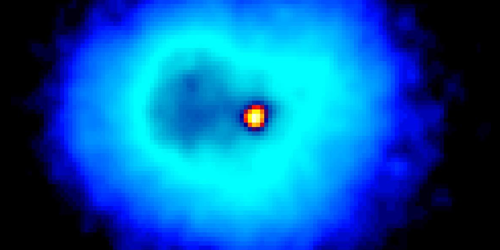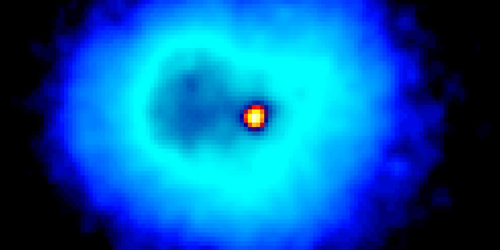Cooling Large Numbers of Molecules to Low Temperatures
Large interacting quantum systems—like ultracold atoms or molecules—are testbeds for fundamental physics. While robust techniques exist for cooling atoms, cooling molecules remains challenging because of their complex electronic structures and their additional rotational and vibrational degrees of freedom. Recently, Lawrence Cheuk at Harvard University and colleagues demonstrated laser-based cooling of a dense gas of calcium monofluoride (CaF) molecules to 60 . Now the team has refined the technique and cooled an even denser molecular gas to 20 . The researchers say that their cooling protocol could also be used for nondestructive imaging of single molecules.
Methods for atom cooling typically involve bombarding the atom with photons. The atom absorbs and then re-emits the photons, losing energy in the process. The atom returns to its starting electronic state after each emission, and the process repeats. But molecules, with their many rotational and vibrational states, don’t necessarily return to their starting state after emitting a photon. As such, they may no longer absorb photons from the lasers, and cooling stops. Researchers have navigated this problem for molecules in free space, but cooling trapped molecules remains tricky, since the trap can interfere with the process. By carefully tuning the frequencies of the cooling lasers, Cheuk and colleagues recently cooled 150 trapped CaF molecules to 60 and achieved a density of .
The team has now cooled 1300 CaF molecules to 20 and increased the density tenfold, setting a record low temperature and high density for laser-cooled molecules. The achievement was made by adding counterpropagating lasers to their setup. The lasers were tuned to the frequencies of quantum-superposed ground states of the molecules, known as “dark states,” that weren’t accessible in their previous experiment. Each molecule emitted roughly 2700 photons as it cooled. The team collected these photons and used them to image the ultracold gas.
This research is published in Physical Review Letters and Nature Physics.
Maria Longobardi
Maria Longobardi is a freelance writer based in Geneva, Switzerland.





